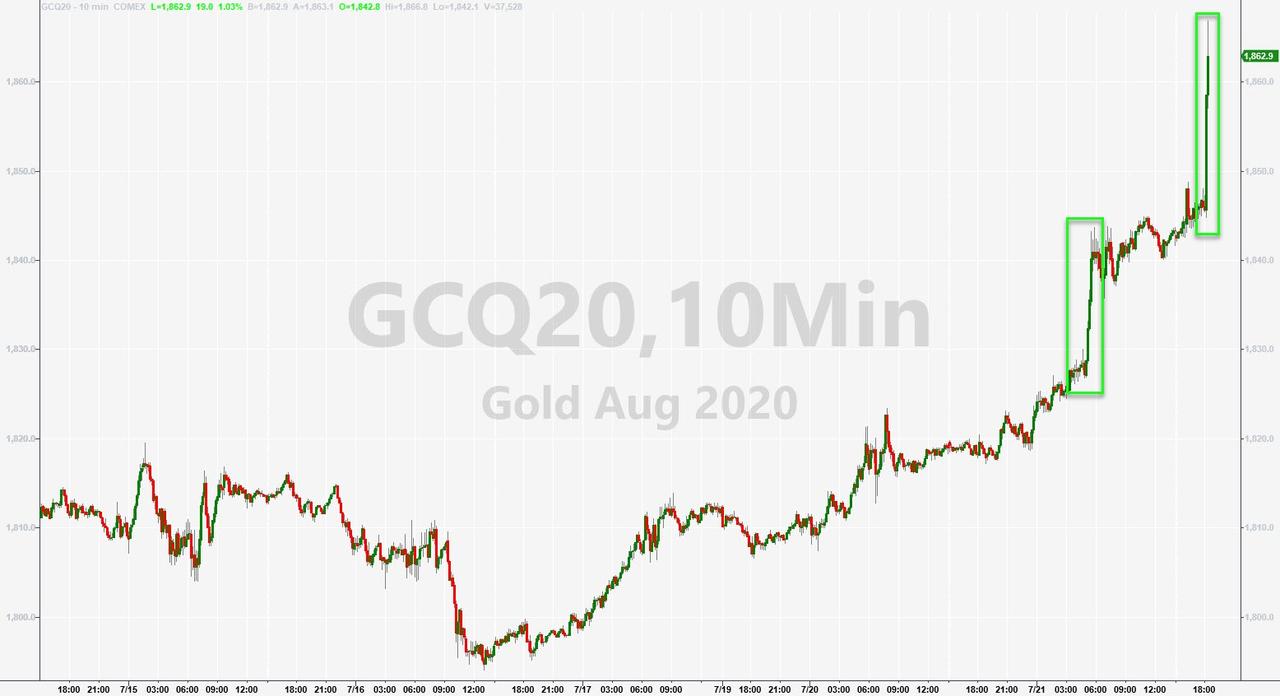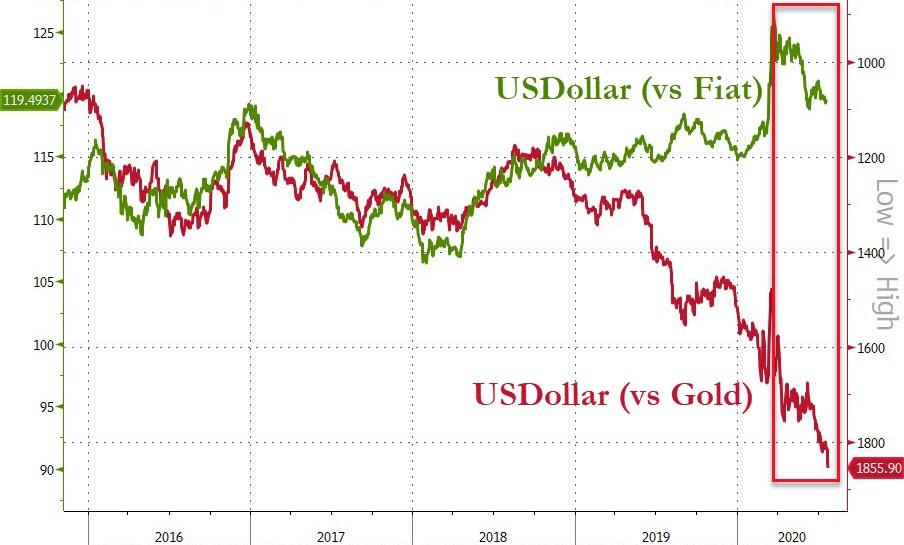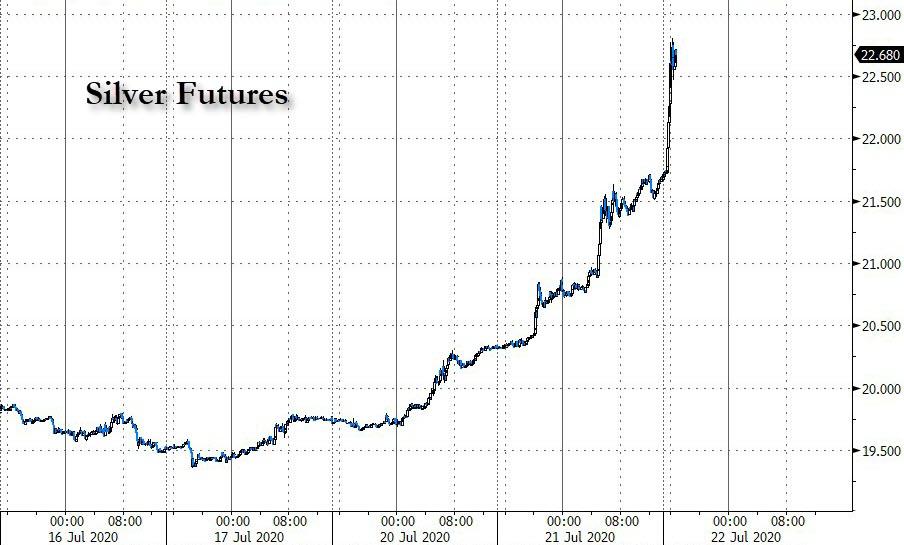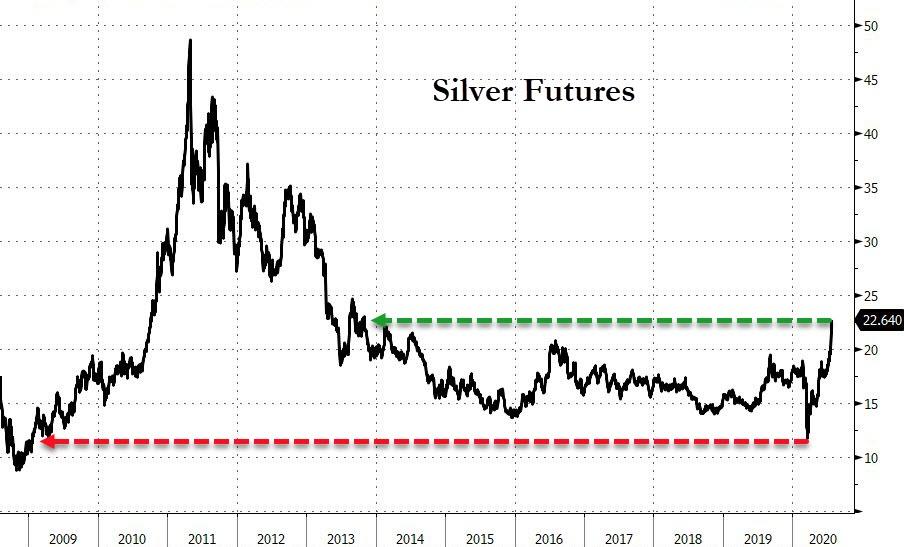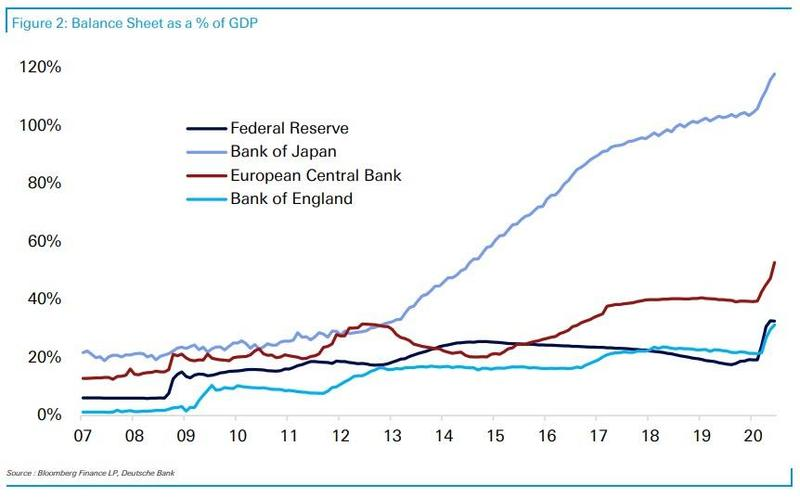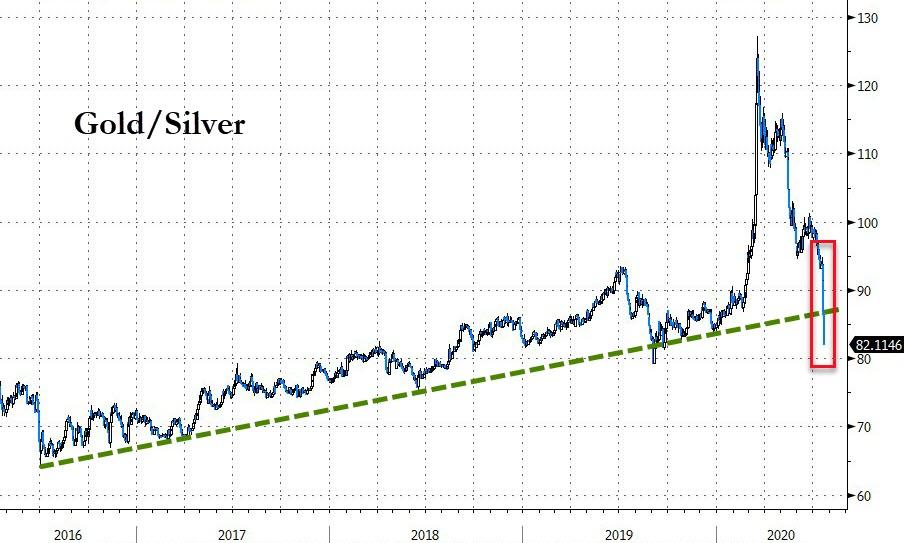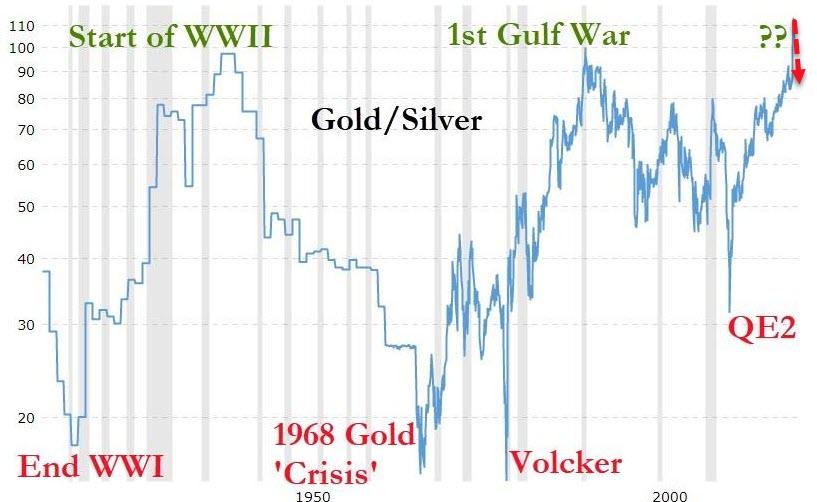Gold Joins Silver In Surge Higher As Asian Markets Open
Tyler Durden
Tue, 07/21/2020 – 20:19
Update (2100ET): Japan’s open appeared to trigger silver’s surge tonight and China’s open sent gold futures lurching higher…
What is the message about the USDollar from the precious metals market relative to its worth versus fiat…
We wonder what happens when the barbarous relic really breaks out…
All gold needs to hit 2,500 is for China’s momentum maniacs or the Robinhooders to start chasing it
— zerohedge (@zerohedge) July 22, 2020
* * *
After two strong days, silver is not stopping its charge as futures smash above $22 for the first time since October 2013…
Source: Bloomberg
Up over 90% from its March 2020 lows…
Source: Bloomberg
As Peter Schiff notes, silver’s current run follows on the heels of its best quarter since 2010.
Safe-haven demand is driving silver prices higher, along with supply concerns. There are also expectations of increasing industrial demand, particularly in the solar energy sector. Even if the global economy is slow to recover, silver may get a boost from government stimulus as various programs funnel money into “green energy” projects.
“Silver-intensive areas such as 5G and solar technology could well benefit from any fiscal impulse,” BMO analysts said in a research note cited by Bloomberg.
“More than $50 billion of green stimulus has been approved by governments thus far this year, over which roughly three-quarters has been in Europe. But perhaps more impactful has been the recent Biden campaign Clean Energy plan, most notably a zero-carbon power grid by 2035 which would see new wind and solar capacity built to displace thermal generation.”
While silver is much more sensitive to industrial demand than gold, at its core, silver is a monetary metal and it tends to track with gold over time. The white metal should continue to benefit from the inflationary pressure of government money-printing and stimulus programs. A Morgan Stanley note quoted by Bloomberg said, “Silver will continue to be pulled higher by the strong gold price and supportive financial conditions.”
Additionally, global central bank money-printing is starting to drive more investors to question their ‘forever’ faith in fiat, and as Deutsche’s Jim Reid notes, The Fed for one, has a lot more room to run…
Some believe this is already a huge amount, but as the second graph shows, the Fed’s balance sheet as a % of GDP is notably lower than the ECB and BoJ’s. If they were aligned, the Fed balance sheet would now be around $11tn and $25tn, respectively.With
DB’s Matt Luzzetti expecting that US debt to GDP will be above 100% in 2020 and near 140% by 2030 from just shy of 80% at the start of this year, it seems inconceivable to me that the Fed and other central bank balance sheets will do anything other than explode over the next decade and perhaps beyond.
Historically, silver tends to outperform gold in a gold bull market, and we’re seeing that dynamic play out in the midst of gold’s current run up. The yellow metal is fast-approaching its all-time high in dollars. But silver futures have climbed more than 40% since the end of the first quarter, surpassing the 14% gain for gold futures during that same period.
Silver coin and bar sales have also helped drive investment demand for silver. Retail bullion coin sales jumped by an estimated 60% year-on-year. Strong demand led to shortages of many silver bullion products, resulting in extended delivery time and higher premiums.
Meanwhile, silver mine output was already trending downward and it has been further squeezed by mine shutdowns due to COVID-19. Analysts at the Silver Institute say they expect mine supply to continue its four-year slide this year. Even with most mines back online, the institute projects a 7% decline in mine output in 2020. Global mine production fell by 1.3% in 2019.
The gold-to-silver plunged to 81x tonight, breaking its recent multi-year uptrend…
…but that is still high by historical standards…
That tells us silver remains undervalued compared to gold. In the modern era, the silver-gold ratio has historically been around 50 to 60-1. At some point, the ratio will likely return closer to its historical norm. Given the economic dynamics, it seems far more likely silver will climb to close the gap rather than the price of gold dropping.
